Keywords
Polymers; Sedimentation rates; Nutrient retention; Coagulant
Introduction
Healthy plant growth and, more specifically, healthy crop growth requires fertilized and stable top soil [1-5]. Although soil is a renewable resource, it can take hundreds of years to build up just a half-inch of topsoil [6-10]. But this amount of topsoil can be washed or blown away in a matter of weeks or months when unprotected. Current practice for preserving nutrients and water in soil is to add a synthetic polymers, labeled as PAM (polyacrylamide) with 15-40% of the acrylamide chain segments replaced by an acrylic acid group [11-17]. The use of polyacrylamide or PAM as a soil-stabilizing additive has been extensively used in agricultural applications to control soil erosion during irrigation [18-20]. Orts et al. [21] has provided an extensive review on the use of the acrylate-acrylamide derivatives of PAM for soil stabilization in agriculture, construction and military applications. Since this type of polymers have both the acrylamide and the acrylate groups, it is important to understand which of the functional groups are providing such functionality. In this work, we study soil water retention, soil stabilization and soil nutrient retention for various homo-polymers either having acrylate side-chains or acrylamide side-chains. A commercially available PAM, labeled as Encap® AST with 15-40% of the acrylamide chain segments replaced by acrylate is also included in the study.
Experimental Methods and Materials
Polymers
Encap® AST was provided by the Encap Company. It is a carboxylate ion modified polyacrylamide. The intrinsic viscosity for Encap® AST is 66.68 dL/g. Superabsorbent was a gift from Kimberly-Clark. It is a commercial product used in personal care products, specifically for diaper applications. Chemically speaking, superabsorbent is a cross-linked polyacrylate. The degree of cross-linking was evaluated with a home-made expansion test similar to the Absorbency under Load as published in numerous patent literatures (The detailed procedures are attached in the supplement material) with an expansion of 12.3 mm versus 0-0.5 mm for other polymers [22-25]. There are two polyacrylamides in this work. One is designated as C3221 from Ciba-Geigy. It is a high molecular weight polyacrylamide1. The intrinsic viscosity for C3221 in distilled water is 11.19 dL/g. The other is designated as P21450 (CAS # 903-05-08) from Pfaltz & Bauer. The intrinsic viscosity for P21450 is 4.76 dL/g. Sodium polyacrylate with a molecular weight of 15,000, 8000 and 5100 were purchased from the Sigma-Aldrich Company. The intrinsic viscosity for this sodium polyacrylate of molecular weight 15,000 is 1.76 dL/g. Chitosan was also purchased from the Sigma-Aldrich Company.
Soils
Three types of soil were used in this study. They are yellow clay soil, Entisol (sandy) soil and the Kewaunee soil (clay soil). Yellow clay soil was of the order of Silty Loam Soil with main components of sand (11.2%), clay (24.8%) and had a pH of 6.8. The soil was provided by the Encap. Sandy soil was of the order Entisol and in the Loamy Sand textural class classified, characterized, and collected from a site in Waushara County, Wisconsin with main components of sand (82.9%), and clay (11.0%), and had a pH of 6.4 [7]. The Kewaunee soil was of the order Afisol classified, characterized, and collected from a site in Waushara County, Wisconsin with main components of sand (28.5%) and clay (34.7%) and had a pH of 6.8 [26].
Coagulants
The coagulants used were calcium carbonate, calcium oxide, and aluminum chloride hexahydrate. Coagulant provided by the Encap Company is aluminum chloride hexahydrate solution. A typical concentration of aluminum chloride hexahydrate solution is 0.06 M. In a separate experiment when nutrient retention studies are required, calcium chloride or calcium chloride dihydrate was used as a coagulant. A typical concentration for calcium chloride dihydrate is 0.204 M. Since calcium ion carries only +2 charge instead of +3 for aluminum cation, the concentration for the calcium chloride cation needs to be higher than those required for aluminum cations.
Methods
Sedimentation test
The sedimentation test method is designed to measure the efficacy of a polymer in flocculating the soil under flooding situations. Polymers which help the soil sediment also help stabilize the soil during the flooding season. Any salts that carry positive charges greater than +1 will have positive effect in helping the soil to settle; a higher positive charge (e.g., Al3+) will be more effective than (e.g., Ca2+) in a given concentration.
For aluminum chloride hexahydrate coagulant, a typical procedure for executing a sedimentation test was first to prepare a clay-coagulant mixture that contains 7.22 g of aluminum chloride hexahydrate and 100 g Kewanee soil (pre-ground and screened using #40 mesh) in 500 mL of distilled water. The coagulant concentration was 0.06 M. A suspension of 20 mL of the clay-coagulant was placed in a 100 mL graduated cylinder; the cylinder was filled with water to a total volume of 98.0 mL. The polymer solution of 1000 ppm, either 1.0 mL or 2.0 mL, was added to the suspension. The mixture was inverted 3 times then placed on table for the soil to settle and the timer was started. The timer stops when the coagulant-soil-polymer mixture settles at a 40 mL mark in the graduated cylinder. The polymer concentrations used are either 10 ppm or 20 ppm.
In a separate experiment, when soil nutrient (typically, Ca2+) retention information is desired, we use calcium chloride dihydrate coagulant instead. When calcium chloride is used as a coagulant, a 15 g of calcium chloride dehydrate was blended with 100 g Kewanee soil and the mixture was blended in a high speed blender with 500 mL of ultra-pure water2. The calcium chloride coagulant concentration was 0.204 M. Transfer a 20 g of clay– coagulant mixture to a 100 mL graduated cylinder and 98 mL of water was added. A 2 mL aliquot of 1000 ppm of polymer was then added to the graduated cylinder which was then inverted 3 times before recording the sedimentation times. Final polymer concentrations in the graduated cylinder were 20 ppm.
Water-retention test
The apparatus assembled for this test uses a 500 mL Graduated cylinder, large glass funnel, large filter paper disk, and plastic film. The large glass funnel was inserted into the 500 mL graduated cylinder and the filter paper disk was folded and placed inside the glass funnel with the plastic film placed over the top as shown in Figure 1.
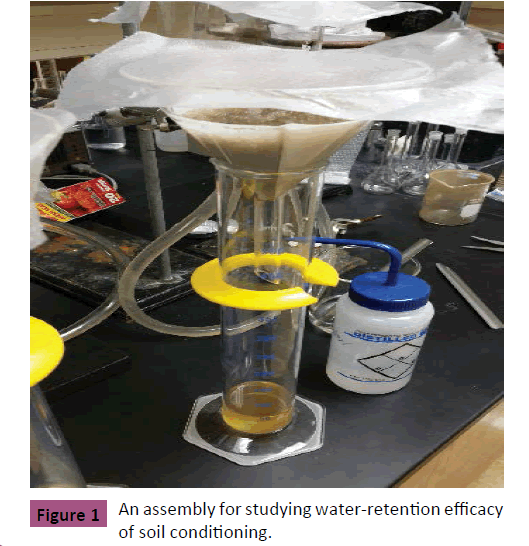
Figure 1: An assembly for studying water-retention efficacy of soil conditioning.
In this procedure, approximately 300 g of dry soil (Entisol, or sandy soil) and polymer blend (297 g of soil and 3 g of polymer which were blended with a laboratory mechanical shaker) were first poured into the filter paper funnel and was saturated with deionized water. The sample was further soaked with excess deionized water until the excess water level rose to just below the edge of the filter paper. The funnel was then covered with a slightly perforated plastic film to prevent excessive evaporation yet still allowing air circulation above water. The sample was allowed to drain for approximately 48 hrs. It was then massed and placed into an oven at 105°C for at least another 48 hrs. The dried sample was then massed and percent moisture was calculated. For a wet sample such as sodium polyacrylate which was provided as a 35% by weight liquid solution, approximately 8.6 g of liquid polymer solution (~3g polymer) was blended with approximately 297 g of soil in sealed bag to produce a ~1% polymer by weight sample.
Nutrient retention studies
The first part of the experiment is similar to those described in the Sedimentation Test when calcium chloride was used as a coagulant instead of aluminum chloride and water used was ultra-pure water. After the soil flocculated, the solution above the flocculated soil was collected and then analyzed with Ionized Coupled Plasma (ICP) evaluation for calcium ions. A material that helps soil retain nutrients (calcium ions) will show a lower concentration of calcium ions in solution as these nutrients should be bound to the soil. The ICP model at UW-Green Bay is a Varian Sequential ICP-OES. The wavelength chosen for calcium cation determination is 317.933 nm.
Results and Discussion
Water retention
Plants need water to grow. It is important for a soil to uptake and retains water during a rainy season so that the water can be slowly released to plants during the dry season. These properties are especially important for a sandy soil of the Entisol type which has main components of sand (82.9%), and clay (11.0%) [7]. The water retention studies developed in this work were intended to study how well a polymer can help a sandy soil to uptake and retain water.
Initial samples studied are superabsorbent, a cationic polymer of Ciba-Geigy, designated as C3221, and sodium polyacrylate of molecular weight of 15,000, and Encap® AST. The results are shown in Table 1 and Figure 2.
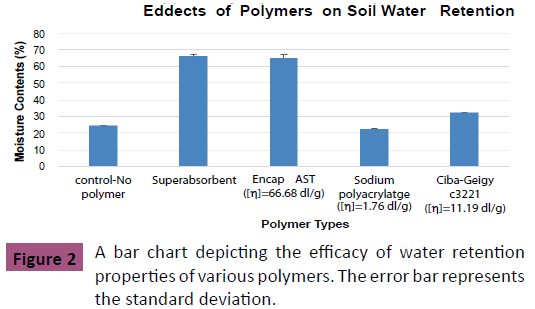
Figure 2: A bar chart depicting the efficacy of water retention properties of various polymers. The error bar represents the standard deviation.
| Sample |
Average moisture Contents (% H2O) |
Standard deviation |
Composition (Weight % of polymer) |
| Control (no polymer) |
24.50 |
0.41 |
- |
| Superabsorbent |
65.98 |
1.96 |
1.02 |
| Encap® AST |
65.08 |
4.22 |
0.99 |
| Sodium polyacrylate (Mwt 15,000) |
22.46 |
0.43 |
1.06 |
| Ciba Geigy C3221 |
32.22 |
0.31 |
1.00 |
Table 1: Water retention efficacy of various polymers.
The sandy soil has an average of moisture content of approximately 24-25%. Any soil conditioner must aim to boost the moisture content beyond that target range. Superabsorbent, a cross linked polyacrylate, boosts the moisture content to 66.0%. In contrast, sodium polyacrylate alone reduces the soil natural moisture contents from 24.5% to 22.5% while a high molecular cationic polymer, C3221, only moderately increased the moisture content to 32.2%.
It is quite surprising that Encap® AST, an acrylate modified polyacrylamide boosts the moisture retention to 65%. One intriguing observation is that Encap® AST is a very high molecular weight polymer and a polymer blend of both a cationic polymer (polyacrylamide) and some anionic side chains. The solution prepared by Encap® AST is highly viscous. A separate experiment3 suggested that this highly viscous solution may seal most of the pores in the soil making the soil almost impervious to water. Thus, it is suspected that high water retention values obtained in Table 1 and Figure 2 could be artificial, not real water retention values. To help the soil retain water, the polymer must be a cross-linked polyelectrolyte such as superabsorbent.
Sedimentation studies
Aluminum chloride hexahydrate as a coagulant
The sedimentation times for a given soil conditioner are usually time dependent. An illustration for this is shown in Figure 3. In Figure 3, the blue dots show the sedimentation times of the soil alone after repeating experiments while the orange dots show the sedimentation times of the soil with Encap® AST after repeating experiments. Without the presence of any polymer, the sedimentation times of the control (Figure 3) remain relatively constant at approximately 540 s. In the presence of Encap® AST, the sedimentation times increase from 255 s to almost 560 s after repeating test multiple times with the same sample. This phenomenon is similar to what have been observed on the thixotropic behavior for a clay-detergent mixture in which after forceful shaking, a gel-like texture becomes liquid-like; but it takes time for mixture to resume back to the gel-like structure. Because sedimentation time for the soil-polymer mixture is time-dependent, in this paper, the sedimentation time reported refers only the initial sedimentation.
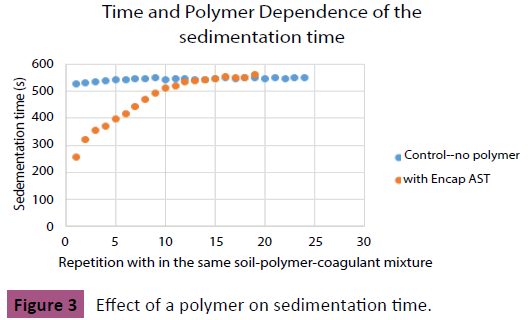
Figure 3: Effect of a polymer on sedimentation time.
Figure 4 shows the sedimentation times for Kewanee soil in the presence and the absence of the polymer. In Figure 4, it clearly shows that a polymer that carries the amide groups (polyacrylamide, C3221, and chitosan) will help the soil settle faster. This is expected as most soil particles carry negative charges. Polyamides upon protonation in aqueous solution will carry positive charges. A charge-charge interaction between the polymer and the soil particle results in precipitation and flocculation. It is surprising to see negatively-charged polyacrylate including Encap® AST, pilyacrylate with molecular weight 15,000 and superabsorbent are also effective in settling the soil although not as effective as the polyamide polymers. It needs to be stressed that these negatively charged polymers show substantially time-effects in soil settlement. For example, for polyacrylate of molecular weight, 15,000 the settlement times increase initially of 152 s to final settlement times of 356 s after 26 settlement studies. This dramatic time effects in soil settlement were not observed for polyamide polymers.
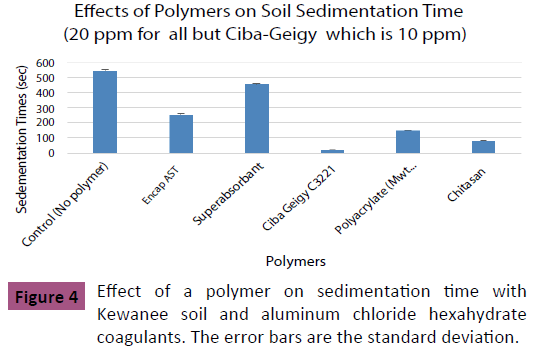
Figure 4: Effect of a polymer on sedimentation time with Kewanee soil and aluminum chloride hexahydrate coagulants. The error bars are the standard deviation.
Calcium chloride as a coagulant
We repeat the sedimentation studies with calcium chloride as a coagulant. Using calcium chloride allows us to probe how well the polymer helps the soil to retain one of the vital soil nutrients, the calcium ion. The results are shown in Figure 5.
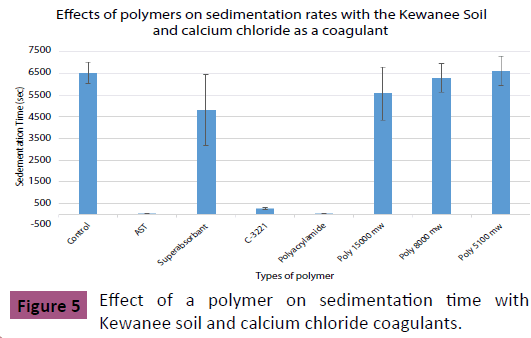
Figure 5: Effect of a polymer on sedimentation time with Kewanee soil and calcium chloride coagulants.
Although the results are largely similar to those shown in Figure 4 for the sedimentation times using aluminum chloride hexahydrate as a coagulant, (for example, the polyamide polymers are very effective in settling the soil), there is one major differences: Encap® AST is very effective in settling the Kewanee Soil with calcium chloride, the polymer is not effective in settling the same soil with aluminum chloride hexahydrate.
The effectiveness of Encap® AST can be ascribed to its high molecular weight (very high viscosity), and its polyacrylamide backbone with some of the acrylamide substituted with the acrylate. We have no explanations the soil settlement differences for Encap® AST in these two types of coagulant systems.
Nutrient retention studies
The nutrient retention studies are aimed to investigate how well the soil retains key nutrients such as calcium ions or magnesium ions after they flocculate with the aid of the polymer. If the polymer helps the soil to retain the calcium ion, the flocculate would uptake more calcium ion leaving less calcium ions in the supernatant. The Ionized Coupled Plasma is well suited to study how much calcium ion left in the supernatant.
Figure 6 shows the ICP studies of the calcium ion concentrations in the liquid phase after the Kewanee soil settles. The results indicate that with Kewanee soil, Encap® AST, superabsorbent, and one type of anionic polymer (molecular weight=8000) do help the soil to retain the calcium ion. These results are consistent with previous research by Grubusic et al. [5] who theorized that carboxylate group help chelate the calcium ion leaving less calcium ion in the liquid phase.
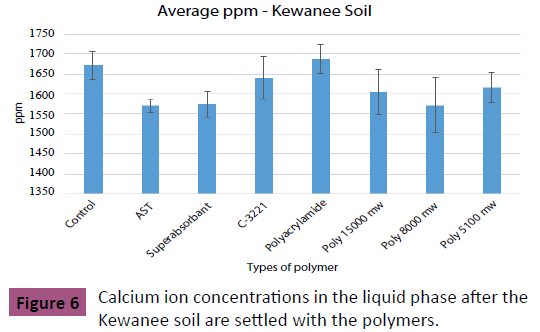
Figure 6: Calcium ion concentrations in the liquid phase after the Kewanee soil are settled with the polymers.
Conclusion
Superabsorbent polymers help the sandy soil to retain the water, increasing the moisture content from a norm of 24% to 66% after the soil was saturated with deionized water and allowing the soil-water mixture to drain under normal gravity condition over 48 hrs. High molecular weight polyacrylamides help the Kewanee soil to settle using either the aluminum hydroxide or calcium chloride coagulants. Polymers with both acylamide and acrylate side chains help the Kewanee soil to retain calcium nutrients when the soil is coagulated with calcium chlorides.
Acknowledgement
This work is supported by WiSys (UW System) grant (106-Y-06-8000-4) and two UW-Green Bay internal grants. We also thank Feeco International Inc. at Green Bay, WI which provides Encap® AST, and aluminum chloride hexahydride coagulant and Kimberly-Clark at Neenah, WI, which provides superabsorbent sample. We thank Mr. Michael Krysiak of Feeco International Inc. and Mr. Richard Dodge of Kimberly-Clark for helpful discussions of this manuscript.
1Molecular weights are inferred from the intrinsic viscosity value which is related to the molecular weight through the Mark- Houwink equation.
2Ultra-pure water was used for because the supernatant will be collected for calcium ion concentration determination using the ionized coupled plasma technique. The regular deionized water may contain unwanted calcium ion in the water to make the measurements undesirable.
3When the soil-AST polymer blend (Placed above a funnel) was saturated with water on top of the blend, the water did not flow through the blend for 3-days indicative the pores in the soil were plugged by the polymer.
References
- De Wit M, Verreyt G, Bao Y, Geise HJ (1995) Mark-Houwink-Sakurada Constants for the Methoxy precursor of Poly(2,5-thienylenevinylene). Macromolecules 28: 5144-5146.
- Houwink R (1941) Relationship between viscosimetrically and osmotically determined degrees of polymerization in high polymers. J Prakt Chem 157: 15.
- Hiemenz P, Lodge T (2007) “Polymer Chemistry”(2ndedn.) CRC Press, Taylor and Francis Group, New York p: 336.
- Painter P, ColemanMM (2009) “Essentials of Polymer Science and Engineering”, DEStech Publications, Inc., Lancaster, PA p: 380.
- Grubusic Z, Rempp P, Benoit H (1967) A universal calibration for gel permeation chromatography.JPolymSciPart C PolymLett 5: 753.
- Myers N, Spoolman SE (2012) Environmental issues and solutions: a modular approach(1stedn.)Brooks/Cole p: 95.
- Cunningham WP, Cummingham MA (2012) “Environmental Science: aglobal concern”, Chapter 9, McGraw-Hill, New York, NY.
- Berg L, Hager MC, Hassenzahl DM (2011) “Visualizing Environmental Science” (4thedn.) Chapter 14, Wiley, Hoboken, NJ.
- Enger ED, Smith BF (2015) “Environmental Science: astudy of interrelationships”(14thedn.) Chapter 13, McGraw-Hill, New York.
- Carson R (1962) “Silent Spring”, Chapter 5, Houghton Mifflin Harcourt, Boston, MA.
- JonesGR, Li Z, Anastasaki A, Lloyd DJ, Wilson P, et al. (2016) Rapid synthesis of well-defined polyacrylamide by aqueous Cu(0)-mediated reversible-reactivation radical polymerization. Macromolecules 49: 483-489.
- Thomas DB, Sumerlin BS, Lowe AB, McCormick CL (2003) Conditions for facile, controlled RAFT polymerization of acrylamide in water. Macromolecules 36: 1436-1439.
- Gody G, Maschmeyer T, Zetterlund PB, Perrier S (2013) Rapid and quantitative one-pot synthesis of sequence-controlled polymers by radical polymerization. Nat Commun4: 2505.
- Covertine AJ, Lokitz, BS, Lowe AB, Myrick LJ, McCormick CL (2005) Aqueous RAFT polymerization of acrylamide and N,N-Dimethylacrylamide at room temperature. Macromol Rapid Commun 26: 791-795.
- Gody G, Barbey R, Danial M, Perrier S (2015) Ultrafast RAFT polymerization: multiblock co-polymers within minutes. Polym Chem 6: 1502-1511.
- Gody G, Mashmeyer T, Zetterlund PB, Perrier S (2014) Pushing the limit of the RAFT process: multiblock copolymers by one-pot rapid multiple chain extensions at full monomer conversion. Macromol 47: 3451-3460.
- Martin L, Gody G, Perrier S (2015) Preparation of complex multiblock copolymers via aqueous RAFT polymerization at room temperature. Polym Chem 6: 4875-4886.
- Lentz RD, Shainberg I, Sojka RE, Carter DL (1992) Preventing irrigation furrow erosion with small applications of polymers. Soil SciSocAm J 56: 1926-1932.
- Lentz RD, SojkaRE (1994)Field results using polyacrylamide to manage furrow erosion and infiltration. Soil Sci 158: 274-282.
- Flanagan DC, Norton LD, Shainberg I (1997) Effects of water chemistry and soil amendments on a silt loam soil: Part 1 Infiltration and runoff. Trans ASAE 40: 1549-1554.
- Orts WJ,Roa-Espinosa A, Sojka RE, Glenn GM, Iman SH,et al. (2007) Use of synthetic polymers and biopolymers for soil stabilization in agricultural, construction, and military applications. Journal of Materials in Civil Engineering 19: 58-66.
- KellenbergerSR, Shih-Shroeder WH,Wisneski AJ (1992) US Patent 5: 149-335.
- Tanzer RW, Abuto FP, Kellenberger SR, Laux DR, Nortman BK, et al. (1995) US Patent 5: 411,497.
- Melius MK, Yarbrough SM, Putzer MC, Kellenberger SR,Byerly SK (1996) US Patent 5: 601,542.
- Melius MK, Yarbrough SM, Putzer MC, Kellenberger SR, Byerly SK (1996) US Patent 6: 646,179.
- Kolb SE, Fermanich KJ, Dornbush ME (2009)Effect of charcoal quantity on microbial biomass and activity in temperate soils. SSSAJ 73: 1173-1181.







